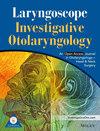The Associative Impact of Recreational Cannabis Use on Sinonasal Diseases
Abstract
Objective(s)
With growing cannabis use in the US, it is crucial to understand the impact of recreational use on sinonasal diseases like chronic rhinosinusitis (CRS), allergic rhinitis (AR), and chronic rhinitis (CR).
Methods
This cross-sectional study leveraged the NIH AllOfUs database to query patient surveys assessing cannabis usage frequency (lifetime never, monthly, weekly, or daily within the past 3 months) and consumption route (smoking or non-smoking). Cannabis users were matched to never users for demographics, healthcare visit frequency, and insurance. A stringent logistic regression model calculated odds ratios (OR) of developing AR, CRS, or CR after survey completion. Cox regression hazard ratios (HR) compared consumption routes.
Results
Twenty-five thousand one hundred sixty-four cannabis users were matched with 113,418 never users. Users demonstrated significantly lower odds of AR, CRS, and CR than never users. For CRS, the ORs compared to never users are as follows: daily users 0.64 (95% CI 0.53–0.78), weekly users 0.61 (95% CI 0.48–0.77), and monthly users 0.80. For AR, the ORs were 0.64 (95% CI 0.58–0.71) for daily users, 0.62 (95% CI 0.54–0.71) for weekly users, and 0.69 (95% CI 0.58–0.80) for monthly users. For CR, the ORs were 0.61 (95% CI 0.47–0.79) for daily users, 0.64 (95% CI 0.47–0.87) for weekly users, and 0.41 (95% CI 0.26–0.65) for monthly users. There was no significant difference between smokers and non-smokers (HR 0.64, 95% CI 0.27–1.5).
Conclusion
There is an inverse, associative relationship between cannabis use and sinonasal disease. This relationship is insufficiently understood, and there remain significant concerns about the impact of cannabis use, especially smoking, on airway pathologies.
Level of Evidence
4.


 求助内容:
求助内容: 应助结果提醒方式:
应助结果提醒方式:


